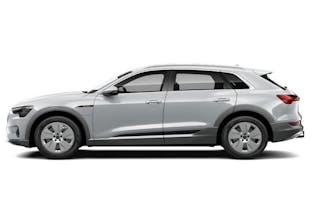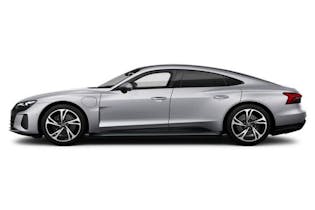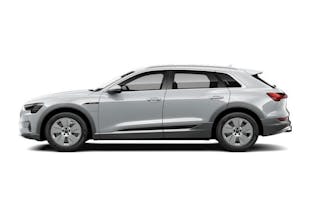Kia Niro HEV Earth car review
One week living with the Kia Niro HEV Earth.

The Kia Niro can be put into the category of a crossover: It’s not quite a small hatch and it’s not really an SUV either. This means it’s a bit higher than your regular small car, making access easier as well as helping with visibility by giving you a slightly elevated seat position.
The latest iteration of the Niro comes in three engines – hybrids, plug-in hybrid (PHEV) and fully electric (EV). We had the Hybrid version for one week.

First impressions
Diving into the Kia line-up is a bit overwhelming. There are four spec levels to choose from (Light, Earth, Water and GT-Line), which get fancier and more expensive as you run through them. Kia lent us the Earth model, which retails for $47,000. It also qualifies for a Clean Car Discount of $3418.
The Earth has a 1.6L engine that’s paired with a small electric motor and battery.
It’s a bit or a TARDIS when you jump inside – the space inside belies the exterior. There’s plenty of room in the back seat but up front is the star of the show. For a tall person in a small car, surprisingly I had heaps of space up front.
It has a nice and clear 8-inch infotainment screen with wireless Apple CarPlay. There’s an obvious gap for a larger screen and that’s because the next models up get a much larger 10.25'' one in the same space. Still, I could see everything very clearly and had no complaints.
Beneath the infotainment screen is a touchscreen bar that you can use to quickly change the music or climate settings. You can switch between the two functions with the press of a button. And it’s all very intuitive and doesn’t crowd the cabin with too many buttons.
How we test
Each vehicle we trial gets the same treatment: a week of commuting in rush hour from Lower Hutt to Consumer HQ (a round trip of 28km); a run to the supermarket; and a drive over the Remutaka Hill and back, to see how it goes on a longer weekend trip. In total this makes for about 270km of motoring.
We record fuel use (both actual and on the trip computer) and measure electricity usage where appropriate, with PHEVs and EVs. The actual fuel use is measured by filling the tank to the brim at the start of the trial and then again at the end, and comparing numbers. It’s an inexact science that we use as a check, but it’s still a real-world appraisal – just one you take with a grain of salt.
Commuting

The car is hilarious when you jump in and start it – it plays a little tune that sounds exactly like the start of a news bulletin. I was looking forward to this feature each time and (luckily) it plays when you switch the car off again.
As a commuter, it works really well. You have good visibility and the electric motor can run things at a variety of speeds, not just when you set off or coast along. You can happily keep the car driving at 50km/h until the small battery drains.
The adaptive cruise and lane-keep assist work really well in traffic, too.
I’m quite a forgetful type and one great feature I discovered was that the car warns you when you’ve left something in the back seat after parking. It’s a stroke of genius that meant I never left my gym bag behind.
Supermarket trip
Being on the smaller side (4.4m long), it’s easy to park at the supermarket. The boot is also plenty big enough for all your shopping and it’s easy to put shopping bags in and out.
You need to be aware that the Light and Earth models have slightly smaller boots (25L less) to accommodate the spare wheel under the floor; the Water and GT-Line have a tyre repair kit instead.
Longer journey
The Niro didn’t feel like it was in its natural environment when going on a long road trip. It’ll do it just fine, but I found it wasn’t particularly powerful when going up steep hills or when overtaking.
However, a very nice feature is that the adaptive cruise control slows you down to your selected speed when going downhill, rather than letting the speed run over. I like it when cars do that.
The other nice feature was the wireless Apple CarPlay that remembers where you were up to in your playlist or podcast and just picks things up seamlessly. It’s nice to have that feature when you stop for a while.
The Niro also has USB plugs in the back of the front seats for rear passengers. While less screentime is always better, at least people in the back can be entertained by devices if need be while travelling long distances.
Final thoughts

I liked my time in the Kia. Most new cars feel nice to drive and this one isn’t an exception. It was my first experience of wireless Apple CarPlay which is my new favourite feature in a car (first equal with a heated steering wheel) since it just works well, and you can leave your phone in your pocket or bag. I can never be bothered with the wired version in my own car now because I have to plug in my iPhone, like a peasant.
The Niro feels like a town car rather than something you’d take on trips, and that’s the environment it’s best suited to. If you need to carry extra people, it swallows them easily too. It’s definitely worth a look if you’re after a smallish car but regularly cart a few people around.
Kia claims 4.4L/100km for the hybrid Niro. The trip computer was on the money with 4.3L/100km. Our actual fuel usage suggested a tad more, at 5.1L/100km.
The vehicle was kindly lent to us by Kia NZ.
We've tested 95 electric and hybrid cars.
Find the right one for you.
Audi

Audi

Audi

Member comments
Get access to comment